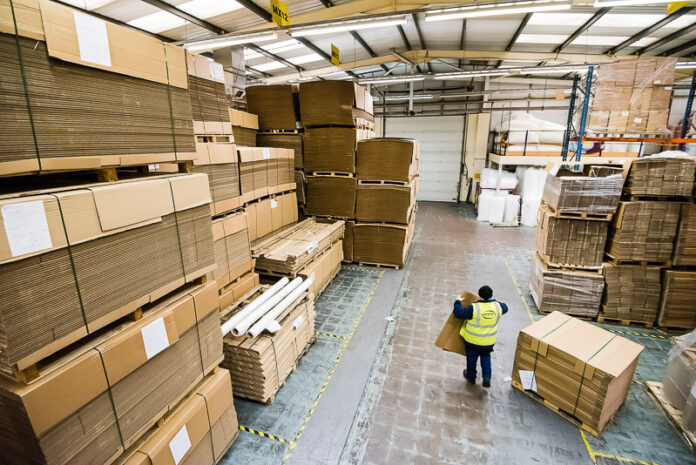Companies understand that packaging is indispensable when marketing a product. Without a doubt, some companies put more effort into product quality, forgetting packaging quality. While for other firms, they acknowledge that packaging adds experience to the consumers–so they put efforts into both product and packaging quality. Regardless of your business model, packaging is done to preserve the product through the supply chain. This process begins with acquiring the most effective packaging equipment and training your staff.
The packaging cost may seem insignificant if a company sells a fast-moving product on the market or in the limelight. However, there are instances whereby the product is cheaper and the packaging pricey, which increases the product’s overall price.
Some of the factors that contribute to the increase in packaging expenses include:
- Product specifications and sensitivity
- The volume of the orders
- Packaging materials that allow damage to the products
- Prolonged packing process
- Expensive shipping cost
- Packaging complexity
Creating a Cost-Effective Packaging Process
Here are seven ways to create a cost-effective packaging process without compromising on product quality.
1. Improve Storage Materials and Packaging Lines
Various packaging materials are available on the market, and your pick depends on your product. Some of the materials are:
- Seals
- Cardboard
- Paper
- Plastic bags
- Stuffing materials
Companies need to evaluate and pick affordable and quality packaging materials. For instance, using paper is costly as the price of paper has increased due to a lack of supply. Therefore, you may have to reevaluate the material without lowering the grade.
2. Train or Retrain Your Staff
It is essential to train or retrain your staff, especially if the company uses a manual packaging process. For example, untrained staff could use more tape on a carton than required or wrongly wrap pallets.
Improper use of company equipment may seem far-fetched. However, a quick training session could save the company a good amount of money. Having the company’s packaging supplier train your employees on the packaging process is cost-effective.
3. Minimize Transit Damage
When customers return damaged goods, it does hurt your business, and to add salt to the injury, you lose the customer’s trust. As a result, clients may go the extra mile by writing a negative review on the company’s webpage and sharing their negative experiences with their family and friends.
Poor packaging and transit damage are the leading causes of product damage. Transit damage results from:
- Prolonged vibrations
- Poor load stability
- Wear and tear
- Sudden impact
- Improper stacking and stacking pallets too high
Companies must invest in durable packaging materials or heavy-duty protective boxes to reduce the number of damaged goods. Effective packaging minimizes the cost of manufacturing, packaging, shipping, and returning damaged goods.
4. Optimize Packaging by Using Custom-Made boxes
Shipping your products in custom-sized boxes will save your company a considerable amount of shipping cost. Usually, companies use relatively large boxes to send small-sized products to their customers. Meanwhile, most shipping companies like FedEx or UPS used weight to price shipments.
Currently, shipping companies use dimensional pricing. With dimensional pricing, they weigh the product to get the ‘normal weighted rate’ and then calculate the volume to find the ‘dimensional weight.’ Customers pay the higher between the two. Shipping products in custom-sized boxes is an easy way to save money on cost.
Here is what companies ought to consider while reducing shipping costs:
- Automating the packaging process as it quickly selects the ideal packaging box based on product size.
- Using padded envelopes to ship some products that don’t necessarily require to be boxed.
- Negotiate shipping rates, especially if your company regularly moves a large volume of goods.
- Ship as many products as you possibly can in one packaging unit.
5. Utilize FEFCO Styles
The European Federation of Corrugated Board Manufacturers (FEFCO) is an international non-profit organization representing the corrugated cardboard industry. FEFCO styles guide offers an efficient and effective system when working with corrugated boxes, as each box is coded with a unique four-digit code. The first two digits represent the box’s style category, and the other two represent the sub-category of the box.
The FEFCO codes are 200 in total and producers, suppliers and buyers trade together using the system. Regardless of language, the system provides a mode of communication and assurance to all parties involved.
Benefits of the FEFCO system include:
- Easier discernment of what is inside different corrugated boxes.
- Minimize waste.
- Minimize packaging costs.
- FEFCO promotes quality material and successful designs.
- The code system is universal, dissolving language barriers.
- The FEFCO system improves the company’s inventory management.
6. Embrace Modern Packaging Innovations
The packaging industry conducts research intending to develop durable, safe, lightweight, and eco-friendly products, all of which save costs. Therefore, companies must pay attention to what is happening in the packaging industry as there is something for everyone, irrespective of sector.
Upgrading keeps your company ahead of the curve, whether it works with food, pharmaceuticals, chemicals, or cosmetics. Some of the trends in the packaging industries are:
- 3D printing of custom-made packaging designs.
- Robotic palletizers to aid in picking, sorting, and packing.
7. Minimize Transit Cost
Minimizing transit packaging translates to reducing transit costs. Paying for large boxes containing small products is equivalent to shipping the product with fresh air. Custom-designed boxes have precise dimensions, and the transit cost is reduced when paying for volumetric shipping.
If your company ships goods on pallets, then keep in mind that only a few boxes can fit per pallet. To send more goods, you need more pallets and incur additional delivery charges.
Bottom Line
There is a lot pertaining to the packaging process. Companies must work alongside professionals when purchasing manufacturing equipment. Package equipment manufacturing companies work on providing top-notch packaging equipment for your company to have an effective packaging process.
The ideal cost-effective marketing process is efficient, secure, reliable, quality packaging material, and environmentally friendly.












